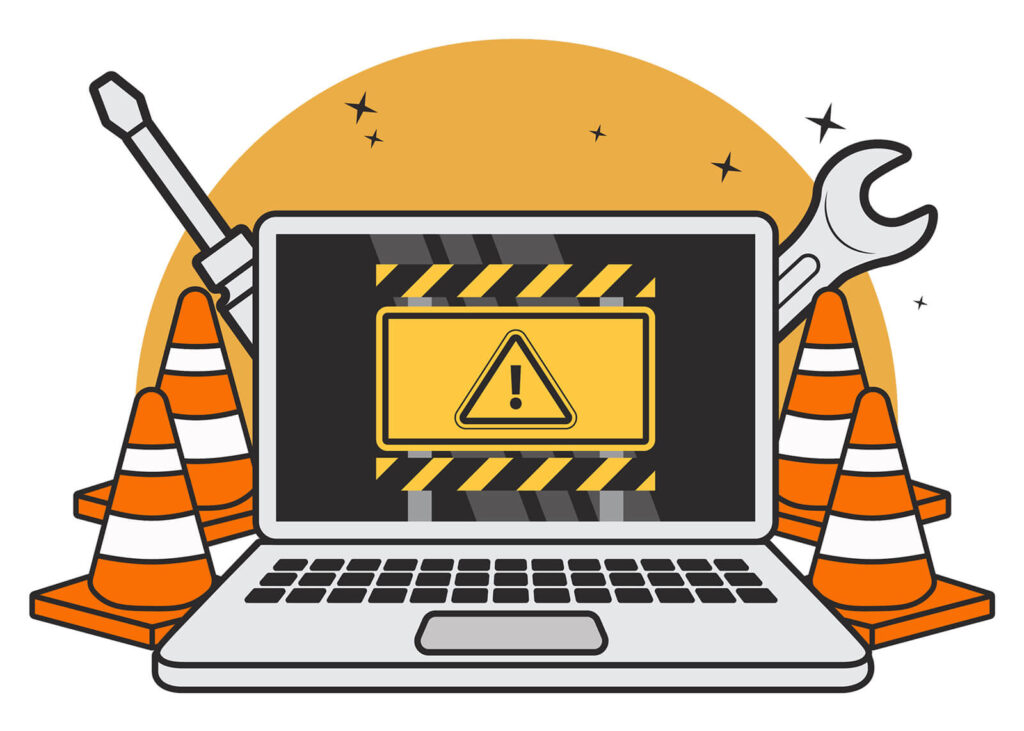Owning a WordPress site isn’t a one-and-done project. Like a car or a home, your website needs regular care to keep it secure, fast, and running smoothly. Ignoring maintenance can lead to broken features, outdated plugins, or worse — a hacked site. The good news is, a little ongoing attention goes a long way toward keeping things problem-free. If you’re new to website terminology, our Website Vocabulary Guide can help you understand the basics.
1. Keep WordPress Core, Themes, and Plugins Updated
WordPress regularly releases updates to improve performance and patch security vulnerabilities. The same goes for themes and plugins. Outdated code is one of the most common reasons a website breaks or becomes compromised. Check for updates at least once a month — or enable automatic updates if your hosting allows it. If you need help doing this safely, see our step-by-step guide on How to Update WordPress.
If your site was built through custom WordPress website design, keeping updates current is essential for performance, compatibility, and long-term stability.
Before updating, it’s always smart to back up your website so you can restore it if anything goes wrong.
2. Back Up Your Website Regularly
Backups are your safety net. If your site is hacked, an update fails, or something stops working, you’ll want a recent copy to restore from. Many hosting providers offer automated backups, but you should still keep your own manual backup—learn how in our WordPress Backup Guide.
3. Monitor Website Performance and Security
Website speed and security go hand-in-hand with user experience. Tools like Google PageSpeed Insights help you identify performance issues, while security plugins like iThemes Security can block malicious logins and warn you about suspicious activity.
If your site shows “Not Secure,” make sure HTTPS is enabled. Our guide on Setting Up HTTPS walks through how to activate SSL and fix mixed-content errors.
4. Optimize Images and Database
Over time, your site can accumulate unnecessary data such as post revisions, spam comments, unused plugins, and oversized images. Cleaning up your database and optimizing images improves load times and helps your site stay efficient. Tools like WP-Optimize and Smush make this process easier.
5. Test Your Forms and Key Features
Contact forms, quote requests, and newsletter signups are easy to overlook — until they stop working. Test them regularly to ensure messages are being delivered and integrations (like email marketing or CRM syncing) still work. A quick monthly check can prevent lost leads and user frustration.
6. Review Analytics and SEO
Reviewing your analytics helps you understand how visitors interact with your site and where improvements can be made. Check Google Analytics and Search Console (if connected) to monitor traffic, search performance, and errors. Maintaining SEO includes checking for broken links, updating meta descriptions, and improving page quality. For SEO terminology, see our SEO glossary entry.
7. Schedule Regular Maintenance
Consistency is key. Monthly or quarterly maintenance prevents small issues from turning into major problems. This often includes updates, backups, security scanning, broken link checks, and performance testing — all tasks that keep your site running smoothly.
Let the Pros Handle It
Not everyone has the time or technical experience to manage ongoing WordPress maintenance — and that’s okay. Austin Web & Design offers two convenient options:
- Website Maintenance Plan – Hands-off protection with updates, backups, monitoring, and security handled by our team.
- Hourly Support & Site Updates – Ideal for one-time fixes, redesigns, or help when something breaks.
Whether you need a quick tune-up or full website care, we’ll keep your site secure, up-to-date, and performing at its best — so you can focus on running your business. If your site needs a deeper refresh, our website design services can help modernize your layout, improve speed, and update outdated functionality.
Need help maintaining your WordPress site?
Contact Austin Web & Design to schedule maintenance or request hourly support from our professional WordPress team.
